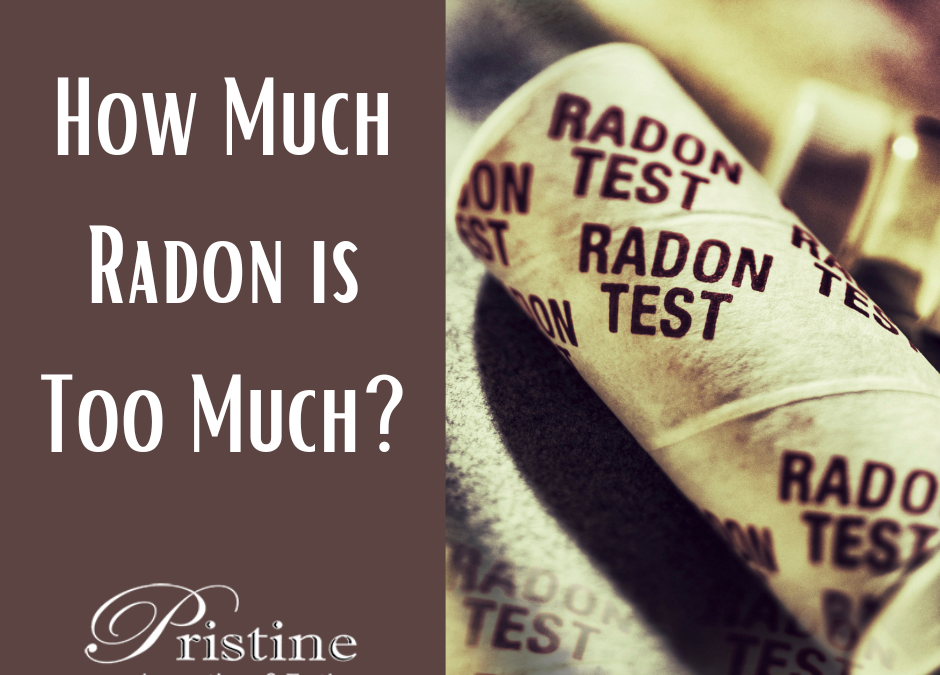Radon is a radioactive gas piled up in the soil, rocks, and soil. This invisible and odorless gas is released into the atmosphere through cracks or holes in the building. Inhaling this gas for a long time can lead to lung cancer. The gas forms from radioactive metals like radium, thorium, or uranium that break down in the soil, rock, or water. But how much radon is too much? The trapped radon gas inside the home becomes too much when the level exceeds 148 Bq/m3 or 4 pCi/L. You can breathe in radon gas at home, offices, schools, and other indoor places.
What can I do if the level of radon is high?
Radon gas is too much if it is more than 148 Bq/m3 or 4 pCi/L in the home. In such cases, it is best to hire a radon mitigation company to reduce the gas level by 99%. These professionals do this by:
- Home pressurization, which installs a fan to help circulate the air and stop the radon from spreading.
- Improve air circulation in the building.
- Sealing the crawl spaces with plastic sheetings.
- Fix the cracks in the foundation.
- Soil function, which uses a pipe to pull radon from the home through vents.
- Install underground or other types of vent systems.
- Test home appliances and soil.
Health effects of radon
Radon is a common cause of lung cancer with an estimate of 3 to 4% in the United States. However, the estimate depends on the radon level and the level of smoke prevalence. The first instance was observed in uranium miners exposed to high levels of radon. They experience an increased rate of lung cancer in miners. Additional studies in Europe, China, and North America suggest that radon at low concentrations, like those in residential buildings, poses health risks and increases the chances of lung cancer worldwide. In essence, lung cancer increases by 16% per 100 Bq/m3. The higher the radon exposure the higher the risk of cancer. However, people that smoke face higher chances of lung cancer. Some studies show that the risk of radon lung cancer is 25 times higher in smokers than non-smokers. Scientists are yet to discover further complications caused by inhaling radon gas. However, the radiation can affect other organs but are less effective compared to the lungs.
What are the symptoms of radon exposure?
Researchers have not found immediate signs or symptoms of inhaling radon gas. However, being exposed to radon for up to 20 years can lead to cancer development, especially in smokers. However, here are some lung cancer symptoms.
- Chest pain.
- Cough
- Difficulty breathing.
- Hoarse or sore throat.
- Trouble swallowing.
How is radon exposure diagnosed?
No treatment is available for radon exposure in humans. However, experts advise that if you work in a place with a high concentration of radon gas, such as miners, you live in a home with high levels of radon, you think you have been exposed to high levels of radon, or you have persistent respiratory symptoms, consult your doctor or health provider. Additionally, it is best for smokers to take the lin cancer screening.
More information for Home Buyers
- Is a Pre-Offer Inspection a Good Idea
- Mistakes to Avoid During Your Home Inspection
- How to Read and Decipher the Home Inspection Report
- 3 Factors Behind the Cost of Home Inspections
- Home Inspection Repair Requests Buyers Shouldn’t Make
- 9 Ways to Get the Most Out of Your Home Inspection
- 5 Home Inspection Mistakes People Make
- Additional: Are Home Inspections Necessary?

